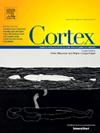Neural correlates of risk decision-making: Insights from the balloon analogue risk task and exponential-weight mean-variance model
IF 3.2
2区 心理学
Q1 BEHAVIORAL SCIENCES
引用次数: 0
Abstract
Risk decision-making involves complex cognitive processes, posing challenges in cognitive neuroscience. This study used the Exponential-Weight Mean-Variance (EWMV) model and intersubject representational similarity analysis (ISRSA) to examine the neural mechanisms of five key processes—prior belief, learning rate, risk preference, loss aversion, and behavioral consistency—during the Balloon Analogue Risk Task (BART). We identified distinct and overlapping neural substrates across three BART stages. The reward system, including the nucleus accumbens (NAcc) and lateral orbitofrontal cortex (lOFC), influenced risk preferences and flexibility through dynamic outcome assessments. The cognitive control network, including the dorsolateral prefrontal cortex (dlPFC) and superior parietal lobule (SPL), regulated risk preferences and behavioral consistency. The default mode network, especially the posterior cingulate cortex (PCC), was linked to prior beliefs and risk preferences. Emotional and value-based regions, such as the rostral anterior cingulate cortex (ACC) and ventromedial prefrontal cortex (vmPFC), modulated learning rates and loss aversion, supporting adaptive behavior. This study highlights the interaction of cognitive, emotional, and evaluative processes in risk decision-making, offering insights into the neural substrates of risk-related behaviors.
风险决策的神经相关性:气球模拟风险任务和指数加权平均方差模型的启示
风险决策涉及复杂的认知过程,对认知神经科学提出了挑战。本研究采用指数加权均值方差(EWMV)模型和被试间表征相似性分析(ISRSA)研究了气球模拟风险任务(BART)中五个关键过程——先验信念、学习率、风险偏好、损失厌恶和行为一致性的神经机制。我们在BART的三个阶段中发现了不同的和重叠的神经基质。包括伏隔核(NAcc)和外侧眶额皮质(lOFC)在内的奖励系统通过动态结果评估影响风险偏好和灵活性。认知控制网络,包括背外侧前额叶皮层(dlPFC)和顶叶上小叶(SPL),调节风险偏好和行为一致性。默认模式网络,尤其是后扣带皮层(PCC),与先前的信念和风险偏好有关。情感和基于价值的区域,如吻侧前扣带皮层(ACC)和腹内侧前额叶皮层(vmPFC),调节学习率和损失厌恶,支持适应性行为。本研究强调了风险决策过程中认知、情感和评估过程的相互作用,为风险相关行为的神经基础提供了见解。
本文章由计算机程序翻译,如有差异,请以英文原文为准。
求助全文
约1分钟内获得全文
求助全文
来源期刊

Cortex
医学-行为科学
CiteScore
7.00
自引率
5.60%
发文量
250
审稿时长
74 days
期刊介绍:
CORTEX is an international journal devoted to the study of cognition and of the relationship between the nervous system and mental processes, particularly as these are reflected in the behaviour of patients with acquired brain lesions, normal volunteers, children with typical and atypical development, and in the activation of brain regions and systems as recorded by functional neuroimaging techniques. It was founded in 1964 by Ennio De Renzi.
 求助内容:
求助内容: 应助结果提醒方式:
应助结果提醒方式:


